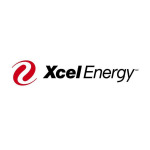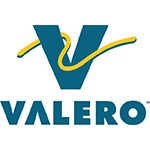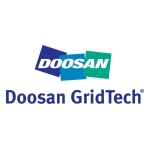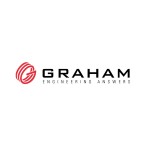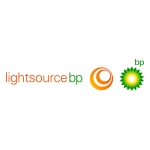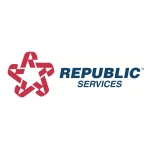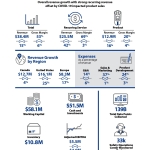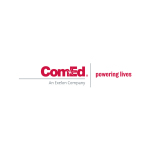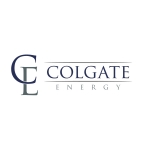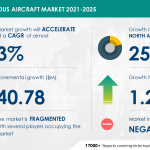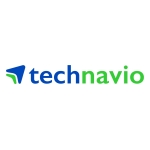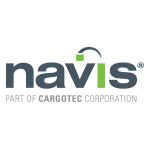Sanctioned Low Cost Tupper Montney Natural Gas Development
HOUSTON--(BUSINESS WIRE)--Murphy Oil Corporation (NYSE: MUR) today announced its financial and operating results for the fourth quarter ended December 31, 2020, including a net loss attributable to Murphy of $172 million, or $1.11 net loss per diluted share. Adjusted net loss, which excludes discontinued operations and other one-off items, was $14 million, or $0.09 net loss per diluted share.
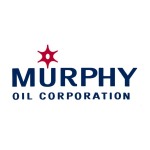
Unless otherwise noted, the financial and operating highlights and metrics discussed in this commentary exclude noncontrolling interest. 1
Highlights for the fourth quarter include:
-
Sanctioned low cost, capital efficient Tupper Montney development
-
Produced 149 thousand barrels of oil equivalent per day, in line with guidance
-
Generated adjusted EBITDAX of $271 million, or $19.77 per barrel of oil equivalent sold
-
Continued on-time and on-budget execution of major Gulf of Mexico projects
Highlights for full year 2020 include:
-
Preserved liquidity of $1.7 billion, including $311 million of cash at year-end
-
Maintained capital discipline with full year accrued capital expenditures of $712 million, excluding King’s Quay floating production system
-
Decreased full year G&A costs by 40 percent from 2019, establishing a baseline for a continued lower cost structure
-
Established a greenhouse gas emissions intensity reduction goal of 15 to 20 percent by 2030 from 2019 levels, excluding Malaysia
-
Instituted COVID-19 protocols, resulting in an offshore infection rate at half the industry average while maintaining all project timelines
-
Maintained a reserve life index of more than 11 years with 57 percent proved developed reserves
During and subsequent to the fourth quarter:
-
Entered into additional crude oil hedges for 2021 and 2022, bringing the total contracted position to 45 thousand barrels of oil per day and 20 thousand barrels of oil per day, respectively
-
Committed to fixed price forward sales contracts related to the Tupper Montney asset for calendar years 2021 through 2024
“We quickly responded to the major pullback in commodity prices by drastically reducing our capital budget and cost structure while adjusting our operational plans, and continued supporting capital allocation to our major offshore projects. Our efforts resulted in strong liquidity, cash on hand and paying a dividend to our shareholders,” stated Roger W. Jenkins, President and Chief Executive Officer.
FOURTH QUARTER 2020 RESULTS
The company recorded a net loss, attributable to Murphy, of $172 million, or $1.11 net loss per diluted share, for the fourth quarter 2020. Adjusted net loss, which excludes both the results of discontinued operations and certain other items that affect comparability of results between periods, was $14 million, or $0.09 net loss per diluted share for the same period. The adjusted net loss from continuing operations excludes the following primary after-tax items: $137 million mark-to-market loss on crude oil derivative contracts and $12 million mark-to-market loss on contingent consideration. Details for fourth quarter results can be found in the attached schedules.
Adjusted earnings before interest, taxes, depreciation and amortization (EBITDA) from continuing operations attributable to Murphy was $246 million, or $17.96 per barrel of oil equivalent (BOE) sold. Adjusted earnings before interest, tax, depreciation, amortization and exploration expenses (EBITDAX) from continuing operations attributable to Murphy was $271 million, or $19.77 per BOE sold. Details for fourth quarter EBITDA and EBITDAX reconciliations can be found in the attached schedules.
Fourth quarter production averaged 149 thousand barrels of oil equivalent per day (MBOEPD) with 55 percent oil and 62 percent liquids. Production was impacted by two subsea equipment issues in the Gulf of Mexico late in the quarter, totaling approximately 3,700 BOEPD of unplanned downtime. The subsea repairs are ongoing, with a return to full production expected during the first quarter 2021. Our onshore assets were able to offset the impact of the subsea matters due to strong well performance.
Details for fourth quarter production can be found in the attached schedules.
FULL YEAR 2020 RESULTS
The company recorded a net loss, attributable to Murphy, of $1.1 billion, or $7.48 net loss per diluted share, for the full year 2020. The company reported an adjusted loss, which excludes both the results of discontinued operations and certain other items that affect comparability of results between periods, of $193 million, or $1.25 net loss per diluted share. This includes after tax impairments of $854 million. Details for full year 2020 results can be found in the attached schedules.
Production for the full year averaged 164 MBOEPD and consisted of 57 percent oil and 64 percent liquids volumes. Details for 2020 production can be found in the attached tables.
FINANCIAL POSITION
The company had $2.8 billion of outstanding long-term, fixed-rate notes at the end of fourth quarter 2020. The fixed-rate notes had a weighted average maturity of 6.8 years and a weighted average coupon of 5.9 percent. Murphy also had $200 million drawn on the $1.6 billion senior unsecured credit facility at year-end 2020.
As of December 31, 2020, Murphy had approximately $1.7 billion of liquidity, comprised of $1.4 billion available under the $1.6 billion senior unsecured credit facility and approximately $311 million of cash and cash equivalents.
COMMODITY HEDGE POSITIONS MITIGATE CASH FLOW VOLATILITY
The company employs commodity derivative instruments to manage certain risks associated with commodity price volatility and underpin capital returns associated with certain assets. During and subsequent to the fourth quarter, Murphy layered on hedges to protect cash flow with the execution of West Texas Intermediate (WTI) fixed price swaps, as detailed in the table below.
Type
|
|
Volumes
(MBOPD)
|
|
Price
(BBL)
|
|
Start Date
|
|
End Date
|
WTI Fixed Price Swaps
|
|
45
|
|
$42.77
|
|
1/1/2021
|
|
12/31/2021
|
WTI Fixed Price Swaps
|
|
20
|
|
$44.88
|
|
1/1/2022
|
|
12/31/2022
|
As of January 26, 2021
To support the sanctioned Tupper Montney development, the company also entered into fixed price forward sales contracts for physical delivery at the AECO hub in Canada, with the current contracts as follows:
Type
|
|
Volumes
(MMCFD)
|
|
Price
(MCF)
|
|
Start Date
|
|
End Date
|
Fixed Price Forward Sales at AECO
|
|
160
|
|
C$2.54
|
|
1/1/2021
|
|
1/31/2021
|
Fixed Price Forward Sales at AECO
|
|
203
|
|
C$2.55
|
|
2/1/2021
|
|
5/31/2021
|
Fixed Price Forward Sales at AECO
|
|
212
|
|
C$2.55
|
|
6/1/2021
|
|
12/31/2021
|
Fixed Price Forward Sales at AECO
|
|
222
|
|
C$2.41
|
|
1/1/2022
|
|
12/31/2022
|
Fixed Price Forward Sales at AECO
|
|
192
|
|
C$2.36
|
|
1/1/2023
|
|
12/31/2023
|
Fixed Price Forward Sales at AECO
|
|
147
|
|
C$2.41
|
|
1/1/2024
|
|
12/31/2024
|
As of January 26, 2021
YEAR-END 2020 PROVED RESERVES
Murphy’s preliminary year-end 2020 proved reserves were 697 million barrels of oil equivalent (MMBOE), consisting of 36 percent oil and 41 percent liquids. Total proved reserves were 13 percent lower than at year-end 2019 in part due to a nearly 30 percent reduction in crude oil prices. Additionally, Murphy’s focus on free cash flow generation, resulting in a lower capital allocation and flatter oil shale production over the five-year plan, has led to approximately 149 MMBOE net of Eagle Ford Shale and Kaybob Duvernay proved undeveloped reserves being reclassified as probable reserves.
These proved reserve reductions were partially offset by improved well performance in the Gulf of Mexico totaling 13 MMBOE net, as well as sanctioning the Tupper Montney development, which added more than 750 billion cubic feet equivalent (BCFE), or 126 MMBOE, of proved reserves with low subsurface risk.
The company maintained a reserve life index in excess of 11 years with 57 percent proved developed reserves.
|
2020 Proved Reserves – Preliminary *
|
Category
|
Net Oil
(MMBBL)
|
Net NGLs
(MMBBL)
|
Net Gas
(BCF)
|
Net Equiv.
(MMBOE)
|
Proved Developed (PD)
|
167
|
28
|
1,208
|
397
|
Proved Undeveloped (PUD)
|
84
|
9
|
1,246
|
301
|
Total Proved
|
251
|
38
|
2,454
|
697
|
* Reserves are based on preliminary year-end 2020 audited proved reserves. Numbers may not add exactly due to rounding.
|
“We are pleased with the improved well performance in our Gulf of Mexico wells. Further, by sanctioning the low-cost Tupper Montney development, we were able to add more than 750 BCFE of, natural gas reserves with minimal subsurface risk to our proved reserve base,” stated Jenkins. “Outside of the current five-year plan, we do plan to continue developing the Eagle Ford Shale and Kaybob Duvernay, which would lead to the probable reserves being reclassified as proved undeveloped reserves.”
REGIONAL OPERATIONS SUMMARY
North American Onshore
The North American onshore business produced approximately 82 MBOEPD in the fourth quarter.
Eagle Ford Shale – During the quarter, production averaged 31 MBOEPD with 71 percent oil volumes.
Tupper Montney – Natural gas production averaged 234 million cubic feet per day (MMCFPD) for the quarter.
Kaybob Duvernay – Fourth quarter production averaged 10 MBOEPD.
Global Offshore
The offshore business produced 67 MBOEPD for the fourth quarter, comprised of 79 percent oil. This excludes production from discontinued operations and noncontrolling interest. Gulf of Mexico production in the quarter averaged 63 MBOEPD, consisting of 78 percent oil. Canada offshore production averaged 4 MBOEPD, comprised of 100 percent oil.
Gulf of Mexico – The company progressed the Calliope project subsea work during the quarter and remains on schedule for second quarter 2021 production. The Khaleesi, Mormont and Samurai project advanced ahead of the 2021 drilling campaign, with first oil remaining on target for mid-2022. Construction of the King’s Quay floating production system continued and is approximately 90 percent complete, having reached a significant milestone of mating the hull and topsides.
Murphy, along with its operating partner, drilled a producer well and injector well for the St. Malo waterflood during the quarter. The company also worked with a separate operating partner to spud the Lucius #9 and Lucius #3 wells in Keathley Canyon. Completions work was initiated on the non-operated Kodiak #3 well, which is scheduled to come online in first quarter 2021.
EXPLORATION
Gulf of Mexico – The non-operated Highgarden well (Green Canyon 895) reached total depth in the fourth quarter and has been classified as a dry hole. The 20 percent working interest resulted in a final cost of $12.8 million net to Murphy.
Also in the fourth quarter, Murphy successfully bid on eight blocks in the deepwater Gulf of Mexico lease sale with a net cost of $5.3 million for 100 percent working interest. These blocks include five prospects and provide standalone and near-field opportunities with an average gross resource potential of more than 90 MMBOE. Subsequent to quarter end, these blocks were awarded to Murphy by the Bureau of Energy Management.
Murphy has farmed into an attractive play-opening trend with Chevron as operator, and the first well is planned for the Silverback prospect (Mississippi Canyon 35). The acreage is located adjacent to a large position held by Murphy and its partners.
2021 CAPITAL EXPENDITURE AND PRODUCTION GUIDANCE
Murphy is planning 2021 capital expenditures (CAPEX) to be in the range of $675 to $725 million with full year 2021 production to be in the range of 155 to 165 MBOEPD, comprised of approximately 52 percent oil and 59 percent total liquids volumes. Production for first quarter 2021 is estimated to be in the range of 149 to 157 MBOEPD. Both production and CAPEX guidance ranges exclude Gulf of Mexico noncontrolling interest (NCI). Murphy’s 2021 plan reflects management’s continued focus on spending within cash flow, with capital directed toward major projects and short-term free cash flow-generating projects. Such a plan would allow the company to return cash to shareholders through the longstanding dividend, with additional cash utilized in a price recovery to pay down debt.
The table below illustrates the capital allocation by area.
2021 Capital Expenditure Guidance
|
Area
|
Percent of Total
CAPEX
|
Gulf of Mexico
|
46
|
US Onshore
|
24
|
Canada Onshore
|
14
|
Exploration
|
11
|
Canada Offshore
|
1
|
Other
|
4
|
For 2021, Murphy has allocated approximately $325 million, or 46 percent, of capital to the Gulf of Mexico for both development drilling and field development projects. These projects include activities related to the previously sanctioned Khaleesi / Mormont and Samurai developments, and the St. Malo waterflood project. The non-operated Kodiak #3 well (Mississippi Canyon 727), Lucius #9 well (Keathley Canyon 919), Lucius #3 well (Keathley Canyon 918) are scheduled to be complete and placed online in the first half of 2021.
Canada offshore spending comprises 1 percent of the budget, with approximately $5 million earmarked to support Hibernia.
The company forecasts total 2021 offshore production volumes to average 72 MBOEPD, with Gulf of Mexico production of 68 MBOEPD. Canada offshore production is forecast at 4 MBOEPD, noting that non-operated Terra Nova continues to remain offline for repairs.
Murphy plans to spend $170 million in the Eagle Ford Shale, which is 17 percent lower than in 2020. This capital includes $115 million for drilling and bringing online 19 operated wells in the company’s Karnes and Catarina acreage, as well as drilling 2 and bringing online 53 non-operated wells during the year, primarily in Karnes. Murphy’s Eagle Ford Shale budget also includes $55 million for field development.
The company has also allocated $95 million to its Canada onshore business in the Kaybob Duvernay, Tupper Montney and Placid Montney. Approximately $85 million is allocated to the newly sanctioned Tupper Montney development to drill 10 operated wells and bring online 14 operated wells. The remaining amount is primarily allocated to Kaybob Duvernay for field development.
2021 Onshore Wells Online
|
|
|
1Q 2021
|
|
2Q 2021
|
|
3Q 2021
|
|
4Q 2021
|
|
2021 Total
|
Eagle Ford Shale
|
|
16
|
|
3
|
|
-
|
|
-
|
|
19
|
Kaybob Duvernay
|
|
-
|
|
-
|
|
-
|
|
-
|
|
-
|
Tupper Montney
|
|
4
|
|
5
|
|
5
|
|
-
|
|
14
|
Non-Op Eagle Ford Shale
|
|
-
|
|
20
|
|
33
|
|
-
|
|
53
|
Non-Op Placid Montney
|
|
-
|
|
-
|
|
-
|
|
-
|
|
-
|
Note: All well counts are shown gross. Eagle Ford Shale non-operated working interest averages 18 percent.
North American onshore production for 2021 is forecast to remain flat at approximately 87 MBOEPD. Annual average production in the Eagle Ford Shale is expected at approximately 30 MBOEPD, while the Kaybob Duvernay is planned to produce 7 MBOEPD. Non-operated Placid Montney production is projected to remain flat at nearly 2 MBOEPD. Tupper Montney production is forecast to increase to approximately 288 MMCFD (48 MBOEPD).
Approximately $75 million is allocated to the 2021 exploration program in the Gulf of Mexico, offshore Mexico and Brazil, with the majority of spending allocated to drilling. Other capital of approximately $30 million, or 4 percent of budget, primarily consists of capitalized interest.
Detailed guidance for the first quarter and full year 2021 is contained in the following schedule.
“Our major Gulf of Mexico projects continue to move forward, with the drilling campaign for Khaleesi, Mormont and Samurai launching early this year, along with drilling meaningful exploration wells in Brazil and Gulf of Mexico,” stated Jenkins. “Further, I am pleased with sanctioning the low cost, capital efficient Tupper Montney development. Over the past few years, we have seen great improvement in all facets of these operations, including reductions in operating expenses and drilling and completions costs, as well as stronger base production performance. When coupled with the macro improvements of higher Canadian natural gas prices and production debottlenecking in the area, the Tupper Montney now competes with premiere shale assets in North America.”
CONFERENCE CALL AND WEBCAST SCHEDULED FOR JANUARY 28, 2021
Murphy will host a conference call to discuss fourth quarter 2020 financial and operating results on Thursday, January 28, 2021, at 9:00 a.m. ET. The call can be accessed either via the Internet through the Investor Relations section of Murphy Oil’s website at http://ir.murphyoilcorp.com or via the telephone by dialing toll free 1-888-886-7786, reservation number 95330576.
FINANCIAL DATA
Summary financial data and operating statistics for fourth quarter 2020, with comparisons to the same period from the previous year, are contained in the following schedules. Additionally, a schedule indicating the impacts of items affecting comparability of results between periods, a reconciliation of EBITDA and EBITDAX between periods, as well as guidance for the first quarter and full year 2021, are also included.
1In accordance with GAAP, Murphy reports the 100 percent interest, including a 20 percent noncontrolling interest (NCI), in its subsidiary, MP Gulf of Mexico, LLC (MP GOM). The GAAP financials include the NCI portion of revenue, costs, assets and liabilities and cash flows. Unless otherwise noted, the financial and operating highlights and metrics discussed in this news release, but not the accompanying schedules, exclude the NCI, thereby representing only the amounts attributable to Murphy.
ABOUT MURPHY OIL CORPORATION
As an independent oil and natural gas exploration and production company, Murphy Oil Corporation believes in providing energy that empowers people by doing right always, staying with it and thinking beyond possible. Murphy challenges the norm, taps into its strong legacy and uses its foresight and financial discipline to deliver inspired energy solutions. The company sees a future where it is an industry leader who is positively impacting lives for the next 100 years and beyond. Additional information can be found on the company’s website at www.murphyoilcorp.com.
FORWARD-LOOKING STATEMENTS
This news release contains forward-looking statements within the meaning of the Private Securities Litigation Reform Act of 1995. Forward-looking statements are generally identified through the inclusion of words such as “aim”, “anticipate”, “believe”, “drive”, “estimate”, “expect”, “expressed confidence”, “forecast”, “future”, “goal”, “guidance”, “intend”, “may”, “objective”, “outlook”, “plan”, “position”, “potential”, “project”, “seek”, “should”, “strategy”, “target”, “will” or variations of such words and other similar expressions. These statements, which express management’s current views concerning future events or results, are subject to inherent risks and uncertainties. Factors that could cause one or more of these future events or results not to occur as implied by any forward-looking statement include, but are not limited to: macro conditions in the oil and gas industry, including supply/demand levels, actions taken by major oil exporters and the resulting impacts on commodity prices; increased volatility or deterioration in the success rate of our exploration programs or in our ability to maintain production rates and replace reserves; reduced customer demand for our products due to environmental, regulatory, technological or other reasons; adverse foreign exchange movements; political and regulatory instability in the markets where we do business; the impact on our operations or market of health pandemics such as COVID-19 and related government responses; other natural hazards impacting our operations or markets; any other deterioration in our business, markets or prospects; any failure to obtain necessary regulatory approvals; any inability to service or refinance our outstanding debt or to access debt markets at acceptable prices; or adverse developments in the U.S. or global capital markets, credit markets or economies in general. For further discussion of factors that could cause one or more of these future events or results not to occur as implied by any forward-looking statement, see “Risk Factors” in our most recent Annual Report on Form 10-K filed with the U.S. Securities and Exchange Commission (“SEC”) and any subsequent Quarterly Report on Form 10-Q or Current Report on Form 8-K that we file, available from the SEC’s website and from Murphy Oil Corporation’s website at http://ir.murphyoilcorp.com. Murphy Oil Corporation undertakes no duty to publicly update or revise any forward-looking statements.
NON-GAAP FINANCIAL MEASURES
This news release contains certain non-GAAP financial measures that management believes are useful tools for internal use and the investment community in evaluating Murphy Oil Corporation’s overall financial performance. These non-GAAP financial measures are broadly used to value and compare companies in the crude oil and natural gas industry. Not all companies define these measures in the same way. In addition, these non-GAAP financial measures are not a substitute for financial measures prepared in accordance with GAAP and should therefore be considered only as supplemental to such GAAP financial measures. Please see the attached schedules for reconciliations of the differences between the non-GAAP financial measures used in this news release and the most directly comparable GAAP financial measures.
RESERVE REPORTING TO THE SECURITIES EXCHANGE COMMISSION
The SEC requires oil and natural gas companies, in their filings with the SEC, to disclose proved reserves that a company has demonstrated by actual production or conclusive formation tests to be economically and legally producible under existing economic and operating conditions. We may use certain terms in this news release, such as “resource”, “gross resource”, “recoverable resource”, “net risked PMEAN resource”, “recoverable oil”, “resource base”, “EUR” or “estimated ultimate recovery” and similar terms that the SEC’s rules prohibit us from including in filings with the SEC. The SEC permits the optional disclosure of probable and possible reserves; however, we have not disclosed the company’s probable and possible reserves in our filings with the SEC. Investors are urged to consider closely the disclosures and risk factors in our most recent Annual Report on Form 10-K filed with the SEC and any subsequent Quarterly Report on Form 10-Q or Current Report on Form 8-K that we file, available from the SEC’s website and from Murphy Oil Corporation’s website at http://ir.murphyoilcorp.com.
MURPHY OIL CORPORATION
SUMMARIZED CONSOLIDATED STATEMENTS OF OPERATIONS (unaudited)
|
|
|
|
|
|
Three Months Ended
December 31,
|
|
Year Ended
December 31,
|
(Thousands of dollars, except per share amounts)
|
2020
|
|
2019
|
|
2020
|
|
2019
|
Revenues and other income
|
|
|
|
|
|
|
|
Revenue from sales to customers
|
$
|
440,082
|
|
|
|
756,984
|
|
|
|
1,751,709
|
|
|
|
2,817,111
|
|
|
(Loss) gain on crude contracts
|
(116,841
|
)
|
|
|
(122,019
|
)
|
|
|
202,661
|
|
|
|
(856
|
)
|
|
Gain on sale of assets and other income
|
6,965
|
|
|
|
2,515
|
|
|
|
12,971
|
|
|
|
12,798
|
|
|
Total revenues and other income
|
330,206
|
|
|
|
637,480
|
|
|
|
1,967,341
|
|
|
|
2,829,053
|
|
|
Costs and expenses
|
|
|
|
|
|
|
|
Lease operating expenses
|
121,793
|
|
|
|
188,720
|
|
|
|
600,076
|
|
|
|
605,180
|
|
|
Severance and ad valorem taxes
|
5,881
|
|
|
|
10,987
|
|
|
|
28,526
|
|
|
|
47,959
|
|
|
Transportation, gathering and processing
|
45,620
|
|
|
|
47,567
|
|
|
|
172,399
|
|
|
|
176,315
|
|
|
Exploration expenses, including undeveloped lease amortization
|
24,793
|
|
|
|
19,535
|
|
|
|
86,479
|
|
|
|
95,105
|
|
|
Selling and general expenses
|
35,862
|
|
|
|
56,478
|
|
|
|
140,243
|
|
|
|
232,736
|
|
|
Restructuring expenses
|
3,615
|
|
|
|
—
|
|
|
|
49,994
|
|
|
|
—
|
|
|
Depreciation, depletion and amortization
|
218,088
|
|
|
|
328,572
|
|
|
|
987,239
|
|
|
|
1,147,842
|
|
|
Accretion of asset retirement obligations
|
10,923
|
|
|
|
10,682
|
|
|
|
42,136
|
|
|
|
40,506
|
|
|
Impairment of assets
|
—
|
|
|
|
—
|
|
|
|
1,206,284
|
|
|
|
—
|
|
|
Other (benefit) expense
|
19,231
|
|
|
|
11,675
|
|
|
|
16,274
|
|
|
|
38,117
|
|
|
Total costs and expenses
|
485,806
|
|
|
|
674,216
|
|
|
|
3,329,650
|
|
|
|
2,383,760
|
|
|
Operating (loss) income from continuing operations
|
(155,600
|
)
|
|
|
(36,736
|
)
|
|
|
(1,362,309
|
)
|
|
|
445,293
|
|
|
Other income (loss)
|
|
|
|
|
|
|
|
Interest and other income (loss)
|
(7,196
|
)
|
|
|
(4,386
|
)
|
|
|
(17,303
|
)
|
|
|
(22,520
|
)
|
|
Interest expense, net
|
(44,546
|
)
|
|
|
(74,180
|
)
|
|
|
(169,423
|
)
|
|
|
(219,275
|
)
|
|
Total other loss
|
(51,742
|
)
|
|
|
(78,566
|
)
|
|
|
(186,726
|
)
|
|
|
(241,795
|
)
|
|
(Loss) income from continuing operations before income taxes
|
(207,342
|
)
|
|
|
(115,302
|
)
|
|
|
(1,549,035
|
)
|
|
|
203,498
|
|
|
Income tax (benefit) expense
|
(44,851
|
)
|
|
|
(24,036
|
)
|
|
|
(293,741
|
)
|
|
|
14,683
|
|
|
(Loss) income from continuing operations
|
(162,491
|
)
|
|
|
(91,266
|
)
|
|
|
(1,255,294
|
)
|
|
|
188,815
|
|
|
(Loss) income from discontinued operations, net of income taxes
|
(244
|
)
|
|
|
36,855
|
|
|
|
(7,151
|
)
|
|
|
1,064,487
|
|
|
Net (loss) income including noncontrolling interest
|
(162,735
|
)
|
|
|
(54,411
|
)
|
|
|
(1,262,445
|
)
|
|
|
1,253,302
|
|
|
Less: Net (loss) income attributable to noncontrolling interest
|
9,201
|
|
|
|
17,313
|
|
|
|
(113,668
|
)
|
|
|
103,570
|
|
|
NET (LOSS) INCOME ATTRIBUTABLE TO MURPHY
|
$
|
(171,936
|
)
|
|
|
(71,724
|
)
|
|
|
(1,148,777
|
)
|
|
|
1,149,732
|
|
|
|
|
|
|
|
|
|
|
(LOSS) INCOME PER COMMON SHARE – BASIC
|
|
|
|
|
|
|
|
Continuing operations
|
$
|
(1.11
|
)
|
|
|
(0.71
|
)
|
|
|
(7.43
|
)
|
|
|
0.52
|
|
|
Discontinued operations
|
—
|
|
|
|
0.24
|
|
|
|
(0.05
|
)
|
|
|
6.49
|
|
|
Net (loss) income
|
$
|
(1.11
|
)
|
|
|
(0.47
|
)
|
|
|
(7.48
|
)
|
|
|
7.01
|
|
|
|
|
|
|
|
|
|
|
(LOSS) INCOME PER COMMON SHARE – DILUTED
|
|
|
|
|
|
|
|
Continuing operations
|
$
|
(1.11
|
)
|
|
|
(0.70
|
)
|
|
|
(7.43
|
)
|
|
|
0.52
|
|
|
Discontinued operations
|
—
|
|
|
|
0.24
|
|
|
|
(0.05
|
)
|
|
|
6.46
|
|
|
Net (loss) income
|
$
|
(1.11
|
)
|
|
|
(0.46
|
)
|
|
|
(7.48
|
)
|
|
|
6.98
|
|
|
Cash dividends per Common share
|
0.125
|
|
|
|
0.25
|
|
|
|
0.625
|
|
|
|
1.00
|
|
|
Average Common shares outstanding (thousands)
|
|
|
|
|
|
|
|
Basic
|
153,599
|
|
|
|
154,007
|
|
|
|
153,507
|
|
|
|
163,992
|
|
|
Diluted
|
153,599
|
|
|
|
154,915
|
|
|
|
153,507
|
|
|
|
164,812
|
|
|
Contacts
Kelly Whitley, This email address is being protected from spambots. You need JavaScript enabled to view it., 281-675-9107
Megan Larson, This email address is being protected from spambots. You need JavaScript enabled to view it., 281-675-9470
Read full story here 



